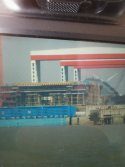The question at issue debated by @Anlsvrthng and @taxiya was the total system weight difference between EMALS and steam catapult. To derive the sum total one adds up all the components.You’re missing my actual main point, which is about not nitpicking components of a system to determine net tradeoffs.
The weight question came up as part of debate over which implementation is more energy efficient. At the same time members like @Higgle and @Atomicfrog sidestepped the debate by pointing out that the main differentiator is fine actuation control, which is argued to be a major strong point of EMALS. Then @silentlurker threw in the question of system reliability. And now you argue that we need to consider all of the above combined and how they interact.
Doesn't look like a very synchronized discussion, does it?

